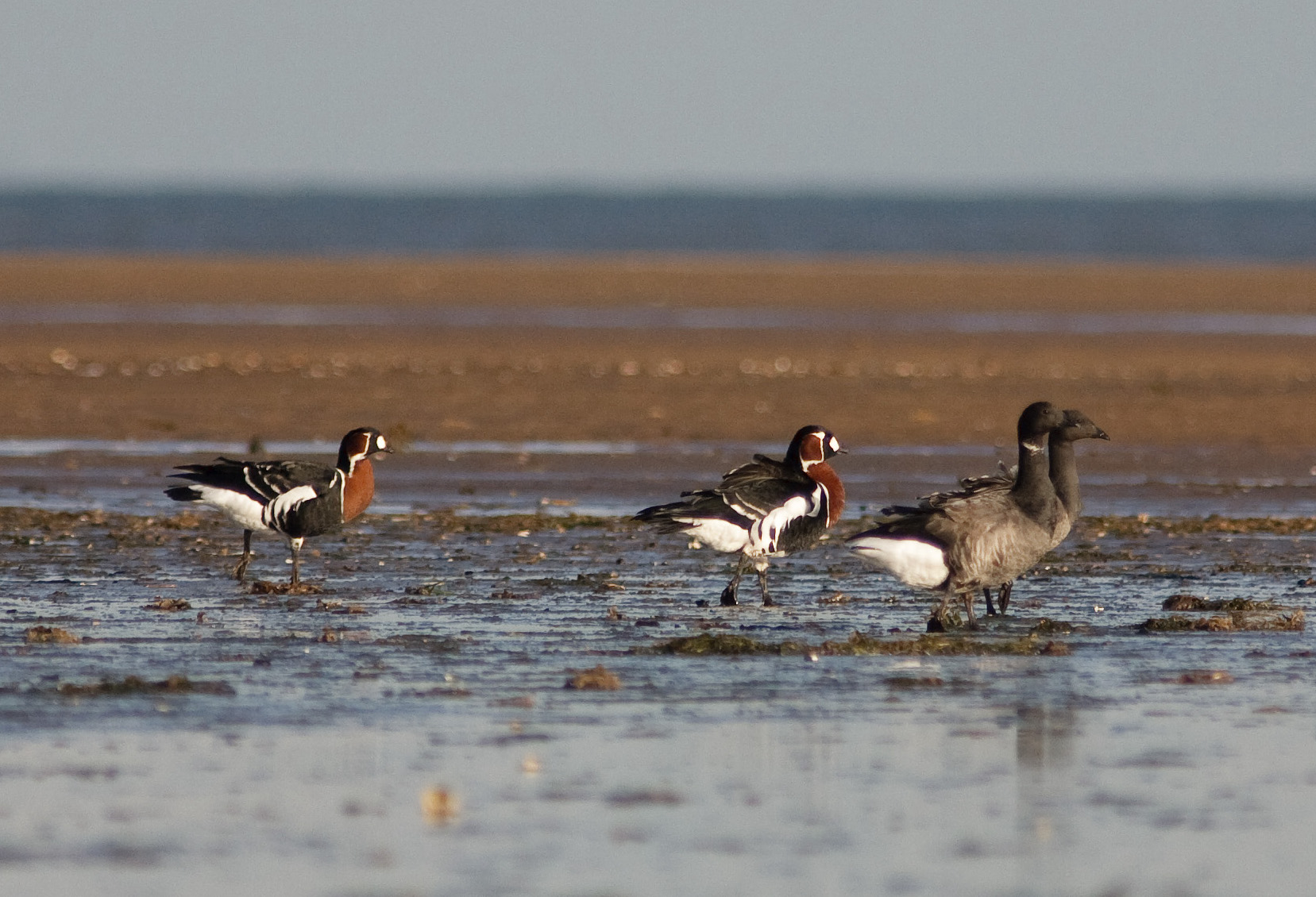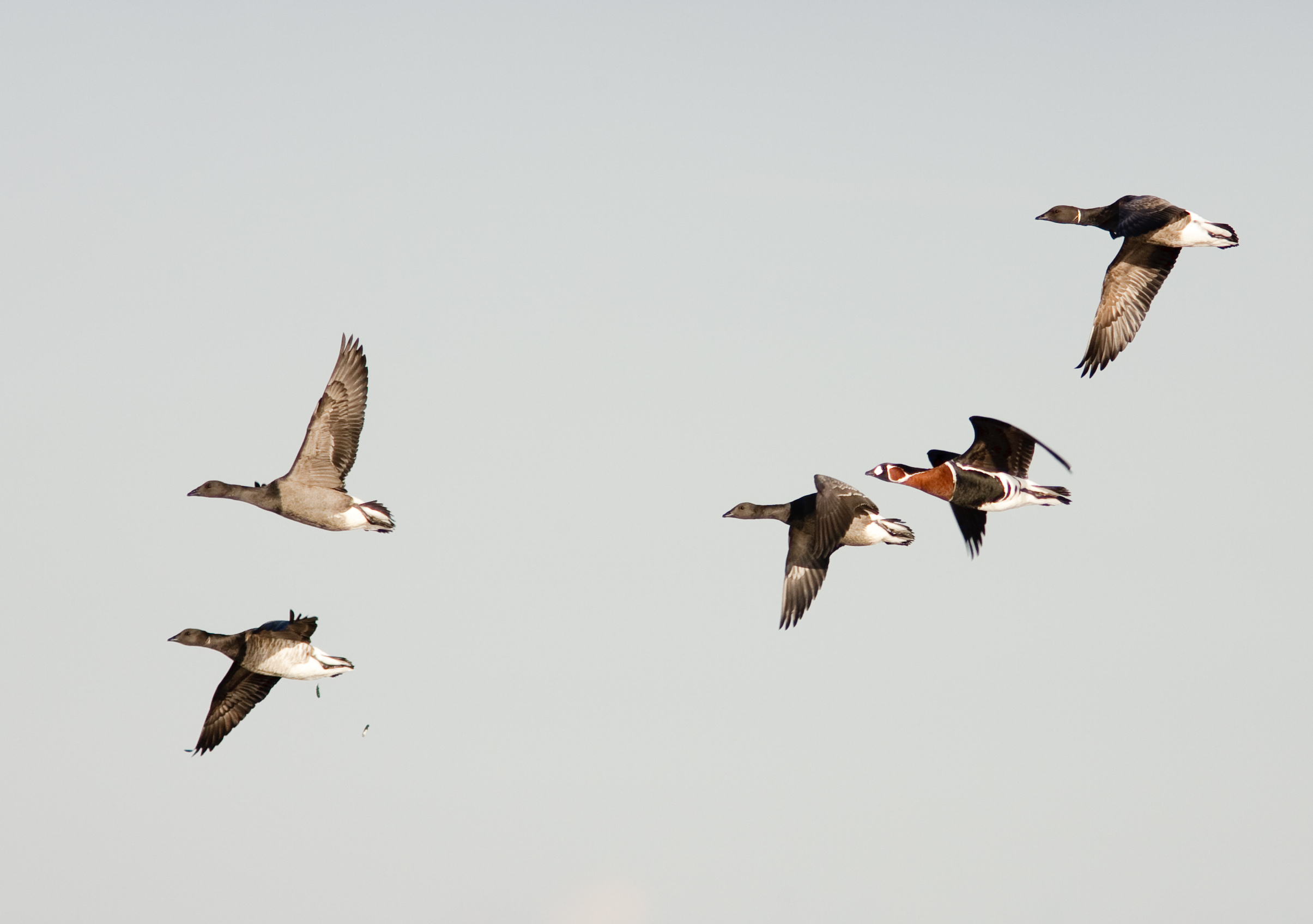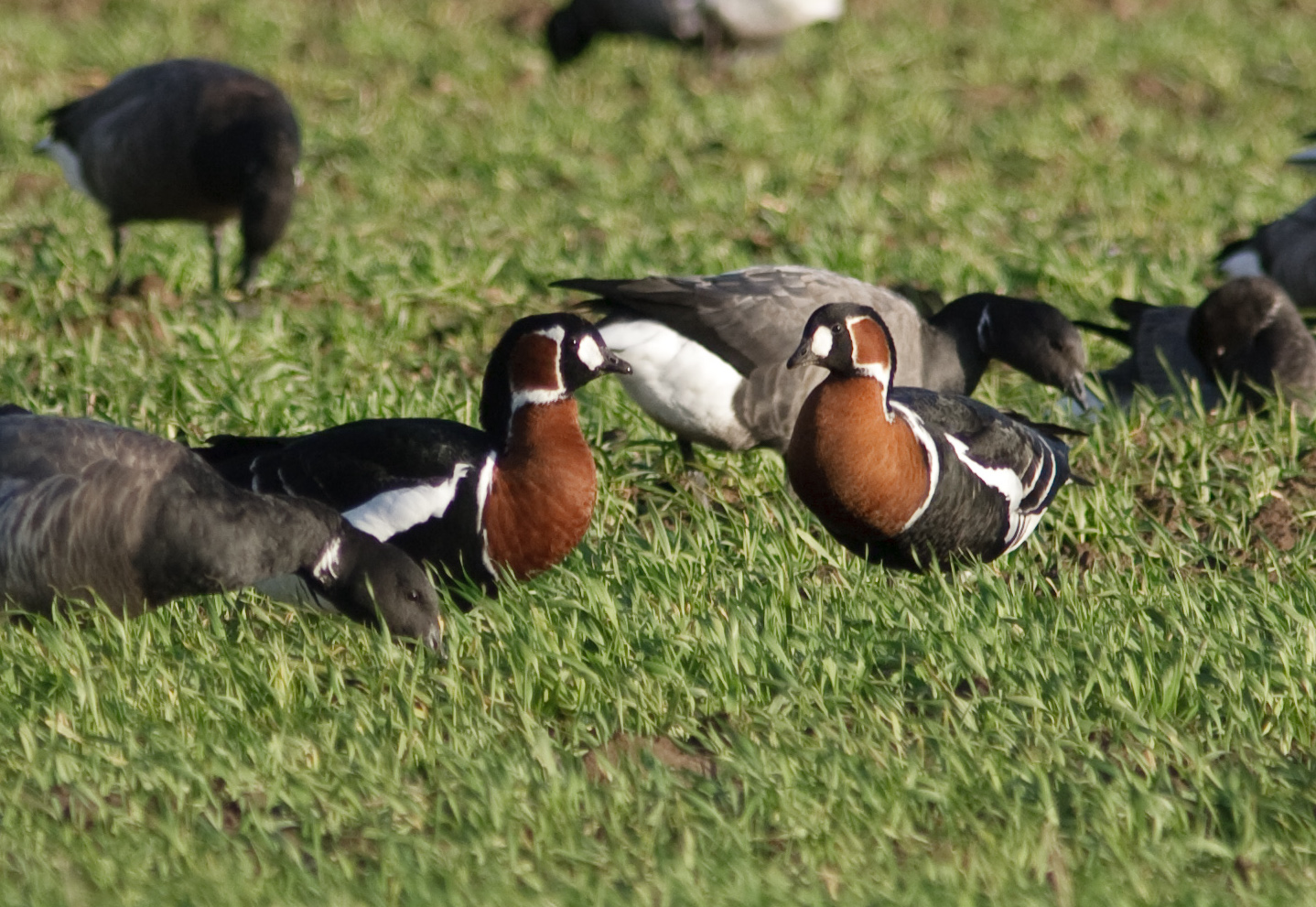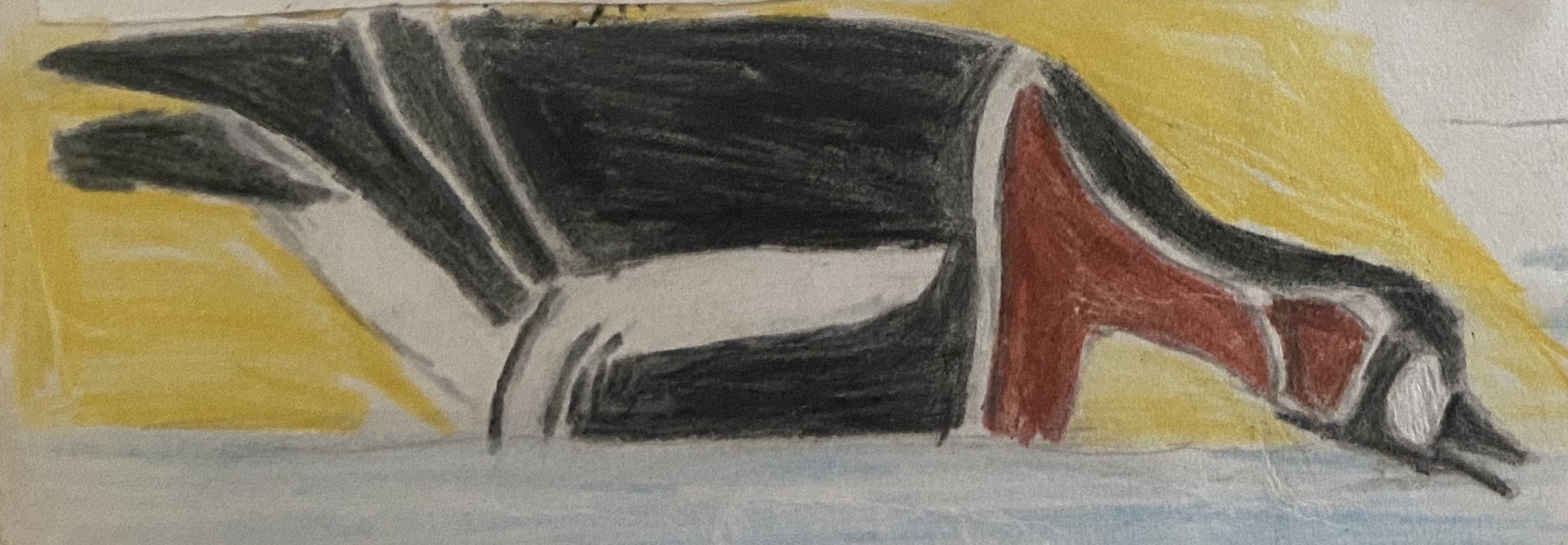Red-breasted Goose Branta ruficollis
Vagrant. Arctic Siberia. First record at Covenham Reservoir, in 1978. In addition to those believed to be wild birds, occasional escapes from captivity occur.



Red-breasted Geese at Saltfleet, which also visited other coastal sites in north Lincolnshire, November 23rd 2006 (Graham Catley).
The first county record of this rare Russian Goose was on October 1st 1978 since when there have been six more individuals between 1984 and 2007. The two adults in 1985 moved around on the Wash, mainly in the company of Dark-bellied Brent Geese, and were present for almost a month. At the time six birds occurred in Britain in the space of two months, which was unprecedented but in line with an increasing number of European records. The two adults in 2006 and 2007 behaved similarly and wandered up and down the Lincolnshire coast between Horseshoe Point and Theddlethorpe. They were last seen in the county on January 24th but were subsequently seen in north Norfolk, having previously also visited Spurn Point in Yorkshire.
Red-breasted Geese breed on the Taimyr Peninsula in Siberia. They migrate SW to winter in the coastal regions of the western Black Sea in Romania and northern Bulgaria. Small numbers regularly winter in the Netherlands, Greece and Turkey.
| Site | First date | Last date | Count | Notes |
| Covenham Reservoir | 01/10/1978 | 1 | Adult | |
| North Cotes-Saltfleet coast | 24/11/1984 | 30/11/1984 | 1 | Adult |
| The Wash - Gibraltar Point NNR-Wrangle marsh, various sites | 09/02/1985 | 20/02/1985 | 1 | Adult |
| Wrangle Marsh | 23/02/1985 | 2 | Adults, same as Gibraltar Point birds | |
| Wrangle Marsh | 27/02/1985 | 03/03/1985 | 1 | Adults, same as Gibraltar Point birds |
| Covenham Reservoir | 12/10/2006 | 2 | Adults | |
| Donna Nook | 13/10/2006 | 31/12/2006 | 2 | Adults, same as Covenham birds |
| Donna Nook-Huttoft coast, various sites | 01/01/2007 | 24/01/2007 | 2 | Adults, same as Covenham birds |
| Wrangle Marsh-Butterwick Marsh | 21/09/2021 | 25/09/2021 | 1 | 2CY+ bird |
| Butterwick Low / Freiston Shore | 09/01/2022 | 20/01/2022 | 1 | 2CY+ bird |
| Frampton Marsh | 13/01/2022 | 14/01/2022 | 1 | Same as Butterwick/Freiston bird |
| Gibraltar Point NNR | 27/01/2022 | 21/02/2022 | 1 | Presumed same as Butterwick/Frampton bird |
| Frampton Marsh | 12/04/2024 | 21/05/2024 | 1 | 2CY+ |
Finder’s report: Red-breasted Goose at Covenham Reservoir, October 1st, 1978, first county record.
by B. M. Clarkson
Note: this account is based on the original RC submission. The RC noted that most records have been December-March. The three in 1978 were presumed to relate to one individual perhaps displaced westwards after the onset of autumn migration from the breeding grounds. This was the 14th British record since 1950, one of only three during the 1970’s.
Circumstances
At 3.20 pm on October 1st I noticed a Red-breasted Goose on Covenham Reservoir. It kept well out on the reservoir, 200-350 yd. away at its closest and mainly in the company of Mallard, although Wigeon, Tufted Duck, Coot and Goldeneye were also present. It flapped it’s wings occasionally as if preparing to fly off and once it rose out of the water as if to take off when some people walked by but just swam further out into the middle of the reservoir. Always alert, never closing its eyes or roosting, neck mostly held ‘not extended’, looking around when unsettled.
Visibility was very good, bright, and sunny, cloud cover 35-50% but clearing south, wind NNE force 3-4. The bird was viewed through Zeiss 10x40B dialyt binoculars and a Hertel and Reuss Tele Variable 25-60x60 telescope.
Description
General appearance – a small, short-billed and strikingly patterned bird. Compared to the nearby Mallard, Anas platyrhynchos, it was deep bodied but of a similar length sitting higher in the water. It appeared to have a short, thick neck. Wings were long and pointed, tips extended to same length as tip of tail and in resting position sat well above tail and tail coverts when the lower back was visible beneath the closed wings. Forehead angled steeply from flat crown down to upper mandible.
Head and crown – forehead, crown and hindneck black, large white spot before eye. Vertical black line running through the eye from fore crown down to black chin and throat. Large, deep chestnut face patch with white surround, as picture. Patch darker in colour than breast.
Upperparts – back, folded wings black except for two white lines along wing coverts; the rear one was noticeably thicker than the front one which did not stand out well when it flapped its wings. Extended wings showed two white lines along lower wing coverts but not going all the way to the primary coverts; front line not as distinct as back one. White uppertail coverts and all black tail feathers above and below.
Underparts – side of neck, foreneck and breast deep chestnut being slightly darker at the edges. Black chin, throat separated from deep chestnut by white line joined to lower white surround around face patch. White from surrounds of deep chestnut patch forming a white stripe down side of neck which petered out where black of lower neck met deep chestnut at side of neck. Vertical thick white stripe running down from between lower neck and mantle down side of deep chestnut breast. Lower breast, belly both black joined to mantle by black vertical stripe in front of white body stripe and behind white border to deep chestnut of breast. Broad white stripe tapered up at the front. Flank white with three black stripes at the end, two of these running up from lower belly area. Undertail coverts to belly, white. Underwing black, duller than glossy black upperparts.
Bare parts – eyes dark, not black. Bill black, short and deep-based.


Sketches of the Red-breasted Goose at Covenham Reservoir from the original BBRC submission (Barry Clarkson).
(Account prepared October 2018; includes all records to 2017; updated from Birds of Lincolnshire September 2022)

